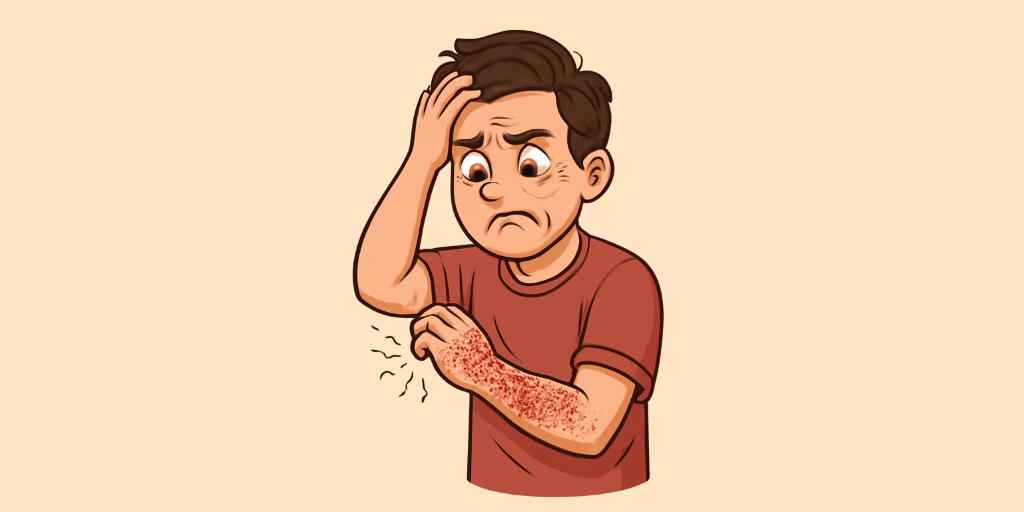Ayurvedic Name: Kaknak
Description:
Kakana Kushtha presents as deeply pigmented, rough, and hardened skin lesions that may appear in a patchy or cracked form. It results from Kapha and Vata imbalance, which leads to skin stiffness, dark discoloration, and scaling. The affected areas may feel numb or insensitive due to excessive dryness. This condition correlates with Lichen Planus or Chronic Dermatitis in modern medicine. Ayurvedic treatment includes Kapha-Vata pacifying herbs like Haridra (Turmeric), Ashwagandha, and Guduchi, while Snehana (Oil therapy) and Swedana (Fomentation) help in softening the skin. Medicated Ghritas (clarified butter) like Panchatikta Ghrita and Mahatikta Ghrita are beneficial for deep nourishment.
Signs & Symptoms:
Sidhma is characterized by Sotha (Swelling) in the scrotal area, often leading to enlargement of the testicles, and is associated with Vata dosha imbalance. The affected area may feel Gaurava (Heaviness), and there is often Dourbalya (Weakness) due to impaired circulation and fluid retention. The skin in the swollen area becomes Rukshata (Dry) and may feel thickened or rough. Kandu (Itching) and Shotha (Inflammation) are also common, along with Agnimandya (Poor Digestion), which causes digestive disturbances and further weakens the body’s ability to recover.
Diagnosis:
Skin Biopsy
Risk Factors:
- Dietary Factors: A diet high in processed foods, sugar, or salty foods can lead to Kaknak (dizziness or vertigo). Lack of hydration and overconsumption of alcohol or caffeine can also contribute to dizziness.
- Lifestyle Factors: Sedentary behavior, lack of sleep, and excessive stress can make the symptoms of Kaknak worse. Low blood pressure or poor circulation due to inactivity can also contribute to dizziness.
Complications:
- Dizziness (Kaknak): A sensation of lightheadedness or unsteadiness, often associated with internal imbalance.
- Weakness (Durbalata): A feeling of weakness or fatigue due to poor circulation or nutrient deficiencies.
- Confusion (Moha): Mental confusion and lack of clarity due to insufficient oxygen or energy.
Epidemeology:
Kaknak (Dizziness) is frequently seen in individuals with low blood pressure, dehydration, or ear infections. It is also more common in the elderly or those who have a sedentary lifestyle.

